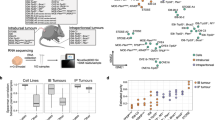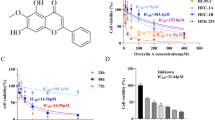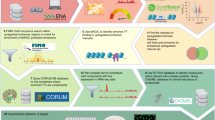Abstract
We have recently shown that malignant tumours from the ovary and uterus expressed erythropoietin (Epo) and its receptor (EpoR), and that deprivation of Epo signal in tumour blocks induced death of malignant cells and capillary endothelial cells in vitro (Yasuda et al, submitted). These in vitro results prompted us to examine the effect of Epo-signal withdrawal on tumours in vivo. RT-PCR analysis demonstrated the expression of mRNAs for Epo and EpoR in the transplants of uterine and ovarian tumours in nude mice. Then we injected locally anti-Epo antibody or soluble form of EpoR into the transplants. At 12 h, 1, 7 or 14 days after the injection, all transplants were resected and examined macro- and microscopically. Tumour size was reduced in Epo signal-deprived transplants. Immunohistochemical examinations revealed destruction of Epo-responding malignant and capillary endothelial cells through apoptotic death. The degree of tumour regression correlated well with the dose and frequency of the injections. Control xenografts with saline injection or needle insertion showed well-developed tumour masses. This Epo response pathway will have profound implications for our understanding of the development and progression of malignant tumours and for the use of Epo-signal deprivation as an effective therapy. © 2001 Cancer Research Campaign
Similar content being viewed by others
Article PDF
Change history
16 November 2011
This paper was modified 12 months after initial publication to switch to Creative Commons licence terms, as noted at publication
References
Anagnostou A, Lee ES, Kessimian N, Levinson R and Steiner M (1990) Erythropoietin has a mitogenic and positive chemotactic effect on endothelial cells. Proc Natl Acad Sci USA 87: 5978–5982
Anagnostou A, Liu Z, Steiner M, Chin K, Lee ES, Kessimian N and Noguchi CT (1994) Erythropoietin receptor mRNA expression in human endothelial cells. Proc Natl Acad Sci USA 91: 3974–3978
Bunn HF and Poyton RO (1996) Oxygen sensing and molecular adaptation to hypoxia. Physiol Rev 76: 839–885
Carlini RG, Reyes AA and Rothstein M (1995) Recombinant human erythropoietin stimulates angiogenesis in vitro. Kidney Int 47: 740–745
Goto M, Murakami A, Akai K, Kawanishi G, Ueda M, Chiba H and Sasaki R (1989) Characterization and use of monoclonal antibodies directed against human erythropoietin that recognize different antigenic determinants. Blood 74: 1415–1423
Guillemin K and Krasnow MA (1997) The hypoxic response: huffing and HIFing. Cell 89: 9–12
Haller H, Christel C, Dannenberg L, Thiele P, Lindschau C and Luft FC (1996) Signal transduction of erythropoietin in endothelial cells. Kidney Int 50: 481–488
Ihle JN (1995) Cytokine receptor signaling. Nature 377: 591–594
Jelkmann W (1992) Erythropoietin: structure, control of production, and function. Physiol Rev 72: 449–489
Komatsu N and Fujita H (1993) Induced megakaryocytic maturation of the human leukemic cell line UT-7 results in down-modulation of erythropoietin receptor gene expression. Cancer Res 53: 1156–1161
Krantz SB (1991) Erythropoietin. Blood 77: 419–434
Lin C-S, Lim S-K, D’Agati V and Costantini F (1996) Differential effects of an erythropoietin receptor gene disruption on primitive and definitive erythropoiesis. Genes Dev 10: 154–164
Masuda S, Nagao M and Sasaki R (1999) Erythropoietic, neurotrophic and angiogenic functions of erythropoietin and regulation of erythropoietin production. Int J Hematol 70: 1–5
Maxwell PH, Pugh CW and Ratcliffe PJ (1993) Inducible operation of the erythropoietin 3′ enhancer in multiple cell lines: Evidence for a widespread oxygen-sensing mechanism. Proc Natl Acad Sci USA 90: 2423–2427
Nagao M, Masuda S, Abe S, Ueda M and Sasaki R (1992) Production and ligand-binding characteristics of the soluble form of murine erythropoietin receptor. Biochem Biophys Res Commun 188: 888–897
Ovejera AA, Houchens DP and Barker AD (1978) Chemotherapy of human tumor xenografts in genetically athymic mice. Ann Clin Lab Sci 8: 50–56
Porter DL and Goldberg MA (1993) Regulation of erythropoietin production. Exp Hematol 21: 399–404
Ratcliffe PJ, O’Rourke JF, Maxwell PH and Pugh CW (1998) Oxygen sensing, hypoxia-inducible factor-1 and the regulation of mammalian gene expression. J Exp Biol 201: 1153–1162
Ribatti D, Presta M, Vacca A, Ria R, Giuliani R, Dell’Era P, Nico B, Roncali L and Dammacco F (1999) Human erythropoietin induces a pro-angiogenic phenotype in cultured endothelial cells and stimulates neovascularization in vivo. Blood 93: 2627–2636
Sadamoto Y, Igase K, Sakanaka M, Sato K, Otsuka H, Sakaki S, Masuda S and Sasaki R (1998) Erythropoietin prevents place navigation disability and cortical infarction in rats with permanent occlusion of the middle cerebral artery. Biochem Biophys Res Commun 253: 26–32
Sakanaka M, Wen T-C, Matsuda S, Masuda S, Morishita E, Nagao M and Sasaki R (1998) In vivo evidence that erythropoietin protects neurons from ischemic damage. Proc Natl Acad Sci USA 95: 4635–4640
Sawyer ST and Hankins WD (1993) The functional form of the erythropoietin receptor is a 78-kDa protein: Correlation with cell surface expression, endocytosis, and phosphorylation. Proc Natl Acad Sci USA 90: 6849–6853
Semenza GL (1998) Hypoxia-inducible factor 1 and the molecular physiology of oxygen homeostasis. J Lab Clin Med 131: 207–214
Wenger RH and Gassmann M (1997) Oxygen (es) and the hypoxia-inducible factor-1. Biol Chem 378: 609–616
Wu H, Liu X, Jaenisch R and Lodish HF (1995) Generation of committed erythroid BFU-E and CFU-E progenitors does not require erythropoietin or the erythropoietin receptor. Cell 83: 59–67
Yamaji R, Okada T, Moriya M, Naito M, Tsuruo T, Miyatake K and Nakano Y (1996) Brain capillary endothelial cells express two forms of erythropoietin receptor mRNA. Eur J Biochem 239: 494–500
Yasuda Y, Nishi N, Takahashi JA, Konishi H, Ohara I, Fujita H, Ohta M, Itoh N, Hatanaka M and Tanimura T (1992) Induction of avascular yolk sac due to reduction of basic fibroblast growth factor by retinoic acid in mice. Dev Biol 150: 397–413
Yasuda Y, Nagao M, Okano M, Masuda S, Sasaki R, Konishi H and Tanimura T (1993) Localization of erythropoietin and erythropoietin receptor in postimplantation mouse embryos. Develop Growth Differ 35: 711–721
Yasuda Y, Masuda S, Chikuma M, Inoue K, Nagao M and Sasaki R (1998) Estrogen-dependent production of erythropoietin in uterus and its implication in uterine angiogenesis. J Biol Chem 273: 25381–25387
Youssoufian H, Longmore G, Neumann D, Yoshimura A and Lodish HF (1993) Structure, function, and activation of the erythropoietin receptor. Blood 81: 2223–2236
Author information
Authors and Affiliations
Rights and permissions
From twelve months after its original publication, this work is licensed under the Creative Commons Attribution-NonCommercial-Share Alike 3.0 Unported License. To view a copy of this license, visit http://creativecommons.org/licenses/by-nc-sa/3.0/
About this article
Cite this article
Yasuda, Y., Musha, T., Tanaka, H. et al. Inhibition of erythropoietin signalling destroys xenografts of ovarian and uterine cancers in nude mice. Br J Cancer 84, 836–843 (2001). https://doi.org/10.1054/bjoc.2000.1666
Received:
Revised:
Accepted:
Published:
Issue date:
DOI: https://doi.org/10.1054/bjoc.2000.1666
Keywords
This article is cited by
-
Expression of the erythropoietin receptor by germline-derived cells - further support for a potential developmental link between the germline and hematopoiesis
Journal of Ovarian Research (2014)
-
Clinical significance of erythropoietin receptor expression in oral squamous cell carcinoma
BMC Cancer (2012)
-
Erythropoietin-driven signalling and cell migration mediated by polyADP-ribosylation
British Journal of Cancer (2012)
-
Epo is involved in angiogenesis in human glioma
Journal of Neuro-Oncology (2011)
-
Erythropoietin-responsive sites in normal and malignant human lung tissues
Anatomical Science International (2010)



